#Critique de la Separation
Text

Critique de la Séparation (Guy Debord, 1961)
#Critique de la Séparation#Critique de la Separation#Guy Debord#Debord#short film#1961#Critique of Separation#quote#Caroline Rittener#black and white#dream#dreams#memory
1K notes
·
View notes
Note
I have a question! You're a shipper. Therefore, you like both S&C, but you only post about Sam and the posts are about him not doing enough to expand his brand, how he is miscast and untapped potential. You've said you were a defender of Sam, but I did not think you came across that way, you mostly write about what Sam isn't doing to your liking. So, my question is why don't you post about Caitriona? One Belfast post some weeks ago and a paragraph about her non-existent branding. Of course, this is your blog, and you can post and say whatever you'd like, I'm just an anon so I don't have a leg to stand on here, but I'm being genuine in asking.
Dear Caitriona Anon,
Yours is an interesting, provocative question and for this reason alone it did not make the classic trek to the bin (yay?).
Oh, yes, a shipper I am. Probably not what you folks call an 'extreme shipper', but a staunch, firm shipper, whose convictions aren't just based on wishful thinking. Enough said.
May I ask (and I swear I am doing it without malice) for how long have you been following my page? I wrote about C quite a number of times, even specifically about her, in a very positive way, if you'd just care to look into the archives. For example, this post: https://www.tumblr.com/sgiandubh/724773265698062337/la-passante-de-la-place-des-vosges-the-passerby. And I have always, always ferociously defended S, against all odds, especially when the Disgruntled Tumblrettes (probably the most unkind, dishonest, cynical tribe of this fandom) went for him in a rather unsavory fashion.
Now, Anon, do not expect me to constantly fangirl over These Two, because this is not going to happen. They are my age and as such, I see things perhaps a bit differently than OL's main demographic. Cynically speaking, I can afford the luxury of being a bit irreverent, from time to time, about two people I find extremely endearing (make no mistake) and worth of my attention. Not a mommy, nor a worshipper. Just a rational shipper (we are quite a few, in here, you know), who does not think this is all about unicorns and leprechauns for ever frolicking at the end of the rainbow.
Because it's not - this is about two people who make terrible gaffes and horrendous mistakes, too. This is about a girl who sometimes shows such entitlement and wrath, that it is almost too hard to like her, at times. And about a boy whose foot in mouth syndrome is, by now, proverbial. This is about two people whose lies and coverups slowly turned them into cartoonish, PR-generated versions of themselves. And this is about two people who, almost like in a Wilde parable, unexpectedly found fame, fortune and love on their path. Will they squander part of it? All of it? Will they be wise about it and learn from their own blunders? This is something I find fascinating to observe, Anon.
My critiques of S's branding have always been, I think (or at least, I sincerely hope), respectful, motivated and constructive. Mainly because I think that (particularly) in his case, there is a deep chasm between his PR and real personas. He would have everything to gain if he stopped trying so hard to be someone he obviously isn't. And so would she.
If my thoughts are not your jam, Anon, simply stop reading me. What you do seem to conveniently forget, too, is that this blog is also, and maybe above everything else, about these two people falling for each other, for real. And it is my deepest belief that we do not help this story by turning it into a cheap cliché or behaving like a hungry mob prone on tantrums if they do not deliver what is conventionally expected. And perhaps you are right, in a way: I seldom post about them as separate entities. In my mind, they are one.
You are welcome to answer, Anon. And I hope I managed to do the same with your question.

101 notes
·
View notes
Text
Madame Putiphar Readalong. Book Two, Chapter XXVI, Part One.:
Including:
Architecture terms!
sexy mandolin playing and foot kissing
Borel’s version of Like a Virgin!
a great idea for art analysis and sadly ends on Orientalism
endless cultural references, -i didn't cover them all, I didn't even mention Borromini my beloved- and endless asterixes and parenthesis on my behalf :P

A Mermaid on a Dolphin's Back. Illustrated by John Gilbert Engraved by the Dalziel Brothers.
Let’s get the worst out of the way shall we? We have had various chapters sans big interventions by the narrator, here we have a pretty big, essaistic one. The questions Pétrus tackles in it is a fascinating one. Why is official art of a certain time period like it is, and what does it tell us about the ruling classes? (more concretely, why is Rococo art influenced by """The Orient""")
Like Rousseau* before him, Borel doesn't separate the artform from the power it represents (something we invariably see brought up in pop culture/divulgation discussions on Asian, Egyptian, or Precolumbine art and architecture) but we rarely see this same scrutiny applied to Greek temples, or European Palaces (yes, I have a specific and relatively recent documentary in mind where the presenter was wanking hard at the enlightened beauties of ancient Greece and early modern Europe. Then we got to the Mexica chapter,,,, the focus was obviously put on Human Sacrifice-someone was in a bad need of reading Montaigne’s des cannibales, there WAS human sacrifice with religious and political aims in Europe at the time- the presenter argued that the intrinsic, racialized thirst for blood of the ancient Mexica lived on in Mexico today, and as an example our very bright presenter showed an audience enjoying.... a corrida.......... a Spanish import.)
*[I cannot find the original Rousseau quote, only how Kant paraphrases it in Critique of Judgement: “If someone asks me if I find the castle before my eyes beautiful I can surely reply: (...) like Rousseau, declaim(ing) against the vanity of the great ones who misspend the people’s sweat in such superfluous things. (...)”]
So, the problem at hand -how art voices the intentions/ideologies of those in power-, is interesting and legitimate. However, the complex, hard to pin down Borelesian Narrator, reaches some pretty fallacious and biased conclusions (what is this narrator like? Is it like Diderot’s stand in, the “je” in Rameau’s Nephew? a Diderot stand in, but also evidently portrayed by Denis as a classist, bland bonpensant (for example when the Nephew, who is usually the venal, cynical, sexist and more importantly, of a lower class character, says something “correct”, the character labelled as “je” condescends to him: “you don’t know how right you are!” the nephew bitterly replies, “yeah, you Philosophers think we (aka, the people) are correct only by accident!” Diderot makes the narrating je look and sound like him, and share some of his positive qualities, but it also voices flaws Diderot saw in himself, becoming a kind of self parody, and parody of the figure of the Philosopher as a whole. Borel’s narrator is contradictory, some of his views change from chapter to chapter, and his emphasis on chastity and religion for example do not seem consistent with views expressed elsewhere-> @sainteverge brought up the tale Medianoche, where the heroine is a Diderot reader while her father is a repressive religious fanatic, and the portrayal of Dillon and the dark priest in La caverne d''Arcueils hardly seem like creatures a catholic fanatic would come up with...)
So, what are the causes of orientalism in 1700’s France? The French aristocracy was as soft and decadent, and as autocratic as “the orientals”, that’s what made them interested in their art (the main problem here is that Borel does not distinguish between the diverse cultures and social strata that form the pot-pourri the Europeans melded into a monolith they call(ed) the Orient. Borel doesn’t have in mind the arts of the nomads of the Mongolian steppes for example. He has a very specific artstyle in mind, and his thesis wouldn’t have been that insane if he had not implied there is an “oriental” nature, like he wouldn’t speak of an "European" nature since he percieves the nations conforming europe as pretty diverse surely.... and if he had specified which strata of the cultures he had in mind he’s speaking of. If he had said, the autocrats here enjoyed the art of the autocrats over there, because it is an art form that both utilizes slave force to be crafted and expresses that way of government, which is the core of the idea he seems to be proposing, I could have agreed with him.) He does this instead:
“The limpness, the pleasures, the incest, the polygamy, the pederasty**, the joy, the no longer chivalrous but rather Moorish gallantry; the slavery and finally the lack of care for slavery, had assimilated two populations that are so different in other points. Up to Pharaoh who had his favourite sultana, his Parc-aux-Cerfs, his lettres-de-cachet, just as Mustapha had his harem and his cords.
The Christian dogma which had rehabilitated Aesop was destroyed. Hercules and Venus, incarnating physical strength and beauty, were the only objects of worship. No more melancholy, no more chastity, no more modesty, no more meditation, no more reverie; nothing great, deep, sad, sublime! Eternal contemplation of God’s splendour, ridiculous! Instead, Muhammad and his joy, Muhammad and his sensuality, Muhammad and his houris.
Indeed pure Islam reigned: in point of fact, under these wigs and baskets one was as muslim as under a turban and a basquine.”
(tr. @sainteverge )
The islamophobia is patent, the presentation of Christian culture (another monolith) as superior too. Is this supposed to be ironic? I cannot tell.
** (as everyone reading this surely knows, the term pederasty in the french 19th c included sexual attraction between men of the same age) I think it’s important to note that Borel figures in the index of pederasts of the French police -an index of people being surveiled for being sodomites, who curiously where also “loud and turbulent” republicans (as michael blix defines it, thanks cam for sharing that.)
After this thoroughly unpleasant paragraph, Borel returns to the events of the story. He focuses on the effect the legitimately intoxicating and seductive view of Pompadour playing her mandolin has on Patrick. The ambiance has the desired effect on Patrick’s still innocent soul, overcome with doubt and admiration, he plunges to Pompadour’s feet and kisses her soles. Her eyes fall on him from the heights of her nonchalance.
Then we get what Like a Virgin would have sounded like if Borel had written it:
“A suave feeling, of which she had lost the memory and which for that reason seemed as new to her as the first pulse of love in a young girl’s heart, was moistening her decrepit soul. Her body, worn out by debauchery, could usually not even be titillated by pleasure anymore, and yet it swooned before the chaste touch of a mouth placed on her foot.”
(tr. By sainteverge)
(also I was exited to see Borel mentioning Philomela, but sadly not linked to Deborah as I had supposed in an earlier chapter, with the nightingale song, but curiously to Pompadour.... it’s an interesting choice since Philomela is clearly a victim and an avenging angel, none of which Pompadour is portrayed as, but it’s Patrick the innocent who calls her that, not the narrator, and he is refering to the singing)
Putiphar praises Patrick’s lyricism comparing him with gallant as Richelieu and poetic Dorat (writer of light, pleasing comedies, favoured by the mundanes in the VXIII th c), Patrick chooses more transgressive authors to correct her, “no, I’m actually like Young and Bayard” ->the latter a playright satirist of bourgeois mores. Putiphar enjoys conventional and conformist art, Patrick fights those choices with more transgressive authors. It’s like a miniature, low key battle of Hernani.
What follows is a key line about profit, money and the arts and voicing one’s opinions. Patrick obviously can earn very little by how he speaks. He is pretty fascinating here, definitely under Putiphar’s spell when he walks in, but he won’t flatter her like that other time or compromise his opinions when speaking to her... and that upsets her, there’s no way Patrick’s way of speaking will ever be lucrative for him, or help him ascend in court etc. He’s a terrible arriviste, Patrick replies he never had any intention of making his speech and feelings lucrative. That is such a slap in the face for Putiphar’s life credo...she’s kind of stunned that someone can think in ways so archaic (perhaps embodying what Borel mentioned above as Chivalry, Patrick is Quixotic) but more importantly, so radically disinterested, he wishes to transit the world speaking his mind and being true to who he is at all times. Putiphar changes the subject -because the conversation is turning too serious, and she has other projects in mind- and asks Patrick for a song from his land (Pat replies with a biblical citation) finally accepts to sing for her but he is afraid she won’t be able to appreciate it as Pompadour’s taste is too accustomed to Opera. In return Patrick asks her to finish her mandolin song (about Isis choosing between an blond or a brown haired man) When she finishes, she expresses the song couldn't be anymore perfect to which Pat, incapable of flattery at the present time, replies the song is “bland, mannered”, has “rather silly lyrics”(So Pomps is like, well if your taste is so refined, show me the best song from the best poet from your country, after telling him how if someone heard him his candid opinions would worsen matters for him -love of the arts in court and in Pompadour’s worldview is nothing more than political posturing and statements, you have to like what is in, and that’s that) Pompadour starts flirting more aggressively with Patrick, who jokingly refuses her. She starts writhing sexily, showing her legs and remarking on how hot she is, even while wearing a very light robe. Patrick' is's attitude is cold, but his eyes betray him and Putiphar notices it. Patrick is in a very enlightenment man way, having a struggle within him between passion and reason, appetite and duty. His senses responded to her invitations, yet his mind begged him to refuse them. (it’s an interesting change from their first meeting, where Patrick seemed to be implied to be giving her more than just a few kisses in her hands) Patrick is also thinking of Pompadour’s body in a patriarchal sexist way, he recovers his wits when remembering, not only Deborah, but Deborah as someone who was a virgin before him, Deborah as the standard of Virginity, Pompadour’s body is beautiful and enticing, but when he remembers that perhaps there wasn’t a single virgin spot in it for him to pose his lips, an iron curtain fell between him and her and only then he thought of Deborah, one who was only his. Gross, etc.
Yet Patrick is afraid he’ll succumb so he hilariously gets up and starts looking at Putiphar’s paintings and boiseries. She calls out from the sacrificial altar, begging him to return claiming he owes her an irish song. So Patrick returns and plays what seems like the longest, least sexy irish balad he could think of. Yet Putiphar is in ecstasy while listening, looks at him both like a mother and a lover proud of her choice. When the song is (finally) over Pompadour straight up poses Patrick’s hands on her heaving breasts. (in a quasi “frenetic” way)(since the chapter touched the arts in a romantic/classicist way, the word frenetic seems loaded) Pompadour cannot praise him in any better way than telling him he sounds like a neapolitan. Patrick of course corrects her telling her that the Irish have always been great at song. She insults the English language thinking that would please him, she does this shrewdly, since “all loves are brothers and that a soul which trembles with enthusiasm is usually an easy ship to catch.” (and Borel takes the chance to praise Gaelic -and Spanish comparing the sonorities of the two languages as majestic- and to complain about how English is advancing in Ireland while Gaelic declines) She asks Patrick to translate his song, is it a love song? She coyly asks? Is it about a cold lover who disdains an unrequited woman?
Is Putiphar right? Is Pat such an easy prey? Will he bite the bait? Find out.... soon XD
( @sainteverge @counterwiddershins )
#madame putiphar#long post#text post#hats off to cam for translating this >_> irish ballads tarabiscoting#it has it all O_O
7 notes
·
View notes
Text
Art and Poetry
Poetry and art, two seemingly distinct forms of expression, often intertwine in a mesmerizing dance of creativity. Each medium has its unique language, yet they share a common goal: to evoke emotion, provoke thought, and stir the soul. In this exploration, we delve into the harmonious relationship between poetry and art, uncovering the ways in which they complement and enrich each other.
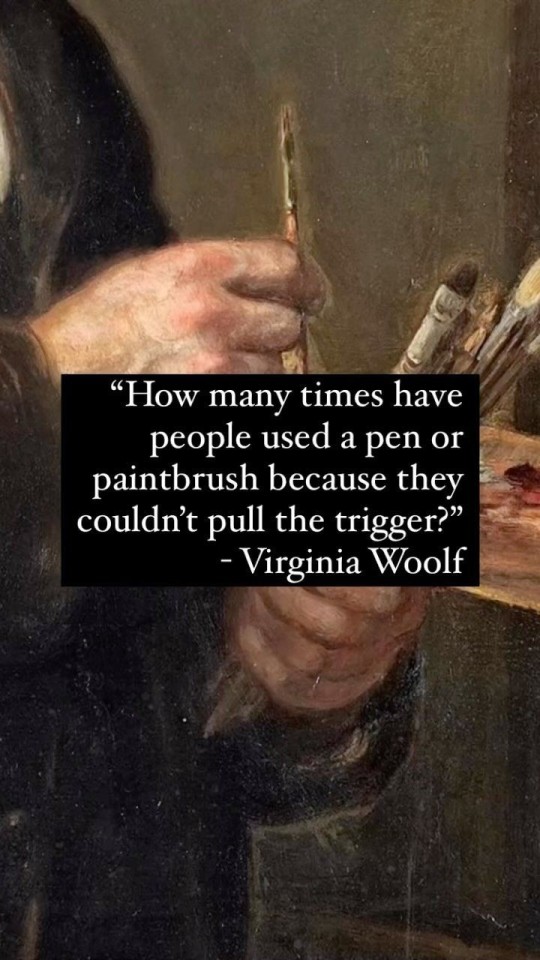
At their core, both poetry and art are vehicles for storytelling. While poetry weaves narratives with words, art communicates through imagery, color, and form. Yet, when combined, they create a multi-dimensional experience that transcends the boundaries of language and perception.
Consider the works of renowned poets like William Blake and Sylvia Plath, whose words evoke vivid imagery and provoke profound emotional responses. Blake's illuminated manuscripts, adorned with his own illustrations, transform his poetry into visual masterpieces. Similarly, Plath's confessional poetry, coupled with her haunting sketches, offers a glimpse into the depths of her psyche, blurring the lines between word and image.
Likewise, visual artists often draw inspiration from poetry to inform their creative process. The Pre-Raphaelite Brotherhood, for instance, sought to imbue their paintings with the lyrical qualities of poetry, embracing themes of love, nature, and spirituality. Through their intricate compositions and symbolic imagery, artists like Dante Gabriel Rossetti and John William Waterhouse brought to life the ethereal landscapes of Tennyson's "The Lady of Shalott" and Keats' "La Belle Dame sans Merci."
Beyond mere inspiration, poetry and art engage in a symbiotic dialogue, each influencing the other in profound ways. The abstract expressionists of the mid-20th century, such as Jackson Pollock and Willem de Kooning, drew upon the spontaneous rhythms and improvisational techniques of jazz poetry to inform their gestural painting styles. The result was a dynamic fusion of word and gesture, sound and color, creating a visceral experience for the viewer.
In the realm of ekphrastic poetry, writers respond to visual art with words, offering their own interpretations and insights. Through the poet's eyes, the static canvas comes alive with new meaning and narrative possibilities. Anne Sexton's "The Starry Night" and W.H. Auden's "Musée des Beaux Arts" are prime examples of how poetry breathes new life into iconic works of art, inviting readers to see them through a fresh lens.
Moreover, poetry and art serve as powerful tools for social commentary and cultural critique. From the protest poems of Langston Hughes to the politically charged canvases of Frida Kahlo, artists have long used their creative platforms to challenge the status quo and advocate for change. By blending word and image, poets and artists amplify their voices, sparking dialogue and fostering empathy in the face of injustice and oppression.
In essence, poetry and art are kindred spirits, bound by their shared quest for truth, beauty, and meaning. Whether separately or in tandem, they have the power to illuminate the human experience, transcending time and space to touch hearts and minds across generations. As we continue to explore the infinite possibilities of creative expression, let us celebrate the enduring legacy of poetry and art, forever entwined in the tapestry of human culture.
In the symphony of life, poetry and art are the melodies that echo through the corridors of our souls, resonating with the rhythm of our shared humanity.
And nothing unites art and poetry more than the mere feeling of melancholy, which is my most adored form of writing ;)
6 notes
·
View notes
Text
It should be noted, vis-a-vis Engels’s model, that every scientific discipline is based at a certain level, precisely that level at which its concepts find a content (without which they are the concepts of nothing, that is, they are not concepts). Such is the level of Marx’s historical theory: the level of the concepts of structure, superstructure and all their specifications. But if the same scientific discipline should set out from another level than its own, from a level which is not the object of any scientific knowledge (such as, in our case, the genesis of individual wills from the infinity of circumstances and the genesis of the final resultant from the infinity of parallelograms . . .), to produce the possibility of its own object and of the concepts corresponding to it, then it will fall into an epistemological void, or, and this is what gives it its vertigo, into a philosophical fullness. This is the fate of the search for a basis Engels undertook in his letter to Bloch: and we find it impossible to distinguish in it between the epistemological void and the philosophical vertigo, since they are nothing but one and the same thing. Precisely this passage, with its arguments borrowed from the kinds of model used in the natural sciences (and ultimately this is their only precaution, a purely moral one), Engels is merely a philosopher. His use of a reference ‘model’ is philosophical. I insist on this point deliberately, for there is a more recent example of the same kind, that of Sartre, who also tries to find a philosophical basis for the epistemological concepts of historical materialism (he has one advantage over Engels in this respect, he knows it and says so). It is enough to refer to certain pages from the Critique de la raison dialectique (for example, pp. 689) to see that if Sartre rejects Engels’s answer and his arguments, he basically approves of the attempt itself. All that separates them is a quarrel over- the means employed, but on this point they are united in the same philosophical task. It is only possible to bar Sartre from his path by closing the one Engels opened for him.
L. Althusser, Appendix to ‘Contradiction and Overdetermination.’
12 notes
·
View notes
Photo
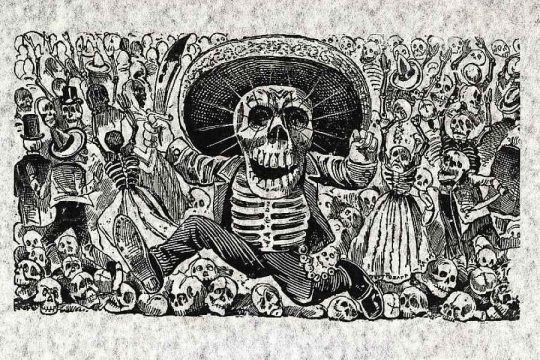
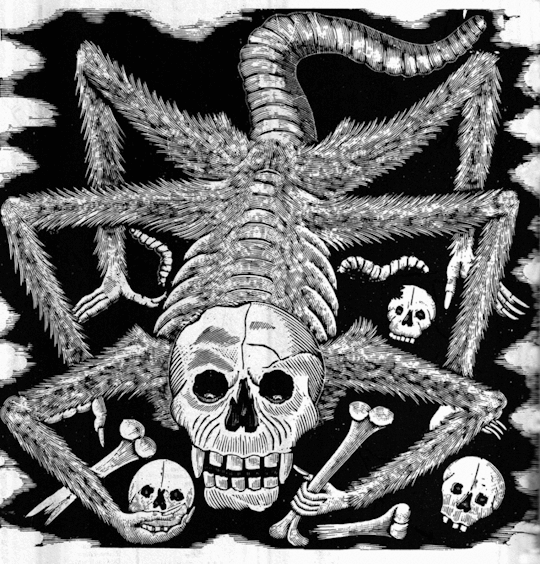


Celebrating Mexican Illustration
I understand it’s been a while since I’ve posted here but there’s no better time than the present to resurface. My purpose for the sudden appearance is due to researching Mexican and Mesoamerican related works then wanting to share my findings along with developing a commissioned illustration in one space. I won’t be posting my work until much later (if I do at all), but wanted a space to write down my musings and notes other than my sketchbook for now as my handwriting is atrocious an printing this off is a lot easier for now.
I’ll be posting ,the chosen artists separately to this post rather than one big mega thread as it could get confusing. I may not be as eloquent and a little rusty on the artist analysis techniques but these are mainly shorthand notes for me to reference whilst making my work. If you find them interesting or useful then that’s just an added bonus.
To begin I have chosen:
Jose Guadalupe Posada -
2nd Feb 1852 til 20th Jan 1913
Politically influenced printmaker/etcher and lithographer. influential to many Mexican artists and cartoonists due to the visual content portraying social and political critiques via satirical illustrations/prints involving the dead.
Throughout his life he owned is how printing studio and worked on promotional items such as posters or illustrations in newspapers. Humour was a large part of his satirical commentary on government abuse and daily life.
Reoccurring imagery of snakes or other poisonous animals along with Calaveras/Skeletons, skulls, angels and society were depicted which culminated in a character called ‘La Catrina’ (female skeleton with a large hat), invented to mock the rich who denied their ancestral Mexican heritage.
Octavio Paz
remarks in one article that they believe Jose to be part of the Expressionist movement, considering the content and approach to the work I tend to agree.
Posada lives on due to the influence he gave to Diego Rivera (Frida Kahlo’s husband) and Jose Clemente Orozco, who became renowned for their Mexican muralist movement as well as cubist and caricature paintings.
I believe the heavy shadows along with negative space in his etching work will be the ideal approach for the textures and lighting I want to achieve in my work. In a similar fashion to my obsession with Bernie Wrightson’s work and approach I believe this will help bridge the gap culturally with appropriate Mexican folk art foundations.
Links -
https://www.openculture.com/2014/11/the-classic-skeleton-art-of-jose-guadalupe-posada.html
https://de10.com.mx/top-10/10-datos-poco-conocidos-de-la-vida-y-obra-de-jose-guadalupe-posada
3 notes
·
View notes
Text
I had some cause to re look at some nietzsche stuff recently. was weird about him as a teen
kinda shocked that he still makes sense to me. or some of the things that i had forgotten i kinda took from him. or how much he influenced me esthetically
i figured if i read para-socialist into him i must of hallucinated everything but i think overall that was a relatively minor error. i just. actually agreed with a lot of him. will to might (not power, but might), never being satisfied with yourself, pursuing an amor fati to achieve a joie de vivre, his critiques of the nihilism of christianity and buddhism and his staunch materialism. the fundamentally dialectical thing beyond good and evil that caused him to choose zoroaster to undo the historical's dualism. that apollonian and dionysian interplay
it's just i'm not an individualist. or rather i tend to treat <what should apply to the self> and <what should be applied to others> as completely separate things.
having "faith in the earth" means first comes food, then comes (post-)morality, the late marxists are right about that, and the epistemic problems with judging others' aristes collapses into the egalitarianism again. compassion isn't a sin and beyond the good and evil it should be known it isn't. if we see others as means to better themselves, yes that leads to disasterous "compassion" a la the compassion of a christian 'befriending' a gay person with the intention of converting them, but what primarily needs address is our epistemic limitations in assessing what's actually compassion. it's just not a sin to feed a man long enough for the moral to come, we just don't know if we're feeding a man. the socialism if taken soberly is just a means. it's when you religionize it that you embrace utopian nihilism, you stop trying to improve the socialism, etc
as such
it's rational to hold yourself to a higher standard, to always strive to be better. but you can't hold anyone else to the same standard because you can't tell who's actually just overcorrecting from the other direction, fundamentally ever. sequester your individual ideas away from how you treat others
and i know that can be self-harming. like if you're never good enough you're never good enough and you're going to deny yourself. i know i do this to myself and i want to do this to myself, but i know in denying myself this will to might i let a great deal of my virtues slide these last 12 years. i let myself get culty commie at points. i gave in to a lot of things i just shouldn't have. i started to think i was a good person who befriends good people and that we're the aristics that need some kind of dialectic away from the sadistic and the self-conceited, when actually, objectively, even by the anti-individualist standards, i'm a parasite and a coward and just fundamentally weak in ways i barely even know how to fight. I yearn for a spiritualism I can't ground in the earth when I need to just get over it and grow that spiritualism from the earth. i need to start doing better by myself, by others, i've known this for years now.
0 notes
Text

🔴 À SAVOIR COMMENT LES APÔTRES DE JÉSUS-CHRIST SONT MORTS.
👉 MATTHIEU
martyre, mort après des supplices enduréd en Ethiopie, tué par un coup d'épée.
👉 MARC
Décédé à Alexandrie, en Egypte, après avoir été traîné par les chevaux dans les rues jusqu'à ce qu'il soit mort.
👉 LUC
A été pendu en Grèce en raison de son immense prédication aux perdus.
👉 JEAN
est le seul à être mort de vieillesse.
Il a pourtant connu le martyre par immersion dans un bain d’huile bouillante à Rome,
Condamné aux mines à Patmos, où il rédigea l’Apocalypse
Il est mort de vieillesse dans l’actuelle
👉 PIERRE
Il a été crucifié la tête en bas sur une croix en forme de X.
Selon la tradition de l'église, il aurait été crucifié ainsi parce qu'il avait dit à ses bourreaux qu'il se sentait indigne de mourir de la même manière que Jésus-Christ était mort.
👉 JACQUES
Jacques, le frère de Jésus (qui n’était pas, officiellement un Apôtre),
le responsable de l’Église de Jérusalem, fut précipité de plus de 30 mètres du haut du pinacle sud-est du Temple pour avoir refusé de renier sa foi en Christ. Quand ses bourreaux ont découvert qu’il avait survécu à la chute, ils l’ont battu à mort avec un gourdin. Il s’agirait du même pinacle sur lequel le diable avait amené Jésus pour le tenter.
👉 JACQUES le fils de Zébédée,
Il était un pêcheur de métier quand Jésus l'a appelé à une vie de ministère. En tant que leader fort de l'église, Jacques a été décapité à Jérusalem.
👉 SIMON
le Zélote a évangélisé la Perse, l’Égypte et les berbères,
Il a été découpé à la scie.
👉 BARTELEMY
Aussi connu comme Nathanaël, il était missionnaire en Asie. Il a été témoin de Jésus-Christ dans la Turquie actuelle. Barthélemy fut martyrisé pour sa prédication en Arménie où il fut écorché à mort par un fouet.
👉 ANDRÉ
Il a été crucifié sur une croix en forme de X à Patras, en Grèce. Ceci après avoir été fouetté sévèrement par sept soldats, ils ont attaché son corps à la croix avec des cordes pour prolonger son agonie. Il a continué à prêcher à ses tourmenteurs pendant deux jours, jusqu'à ce qu'il a expiré.
👉 THOMAS
Il a été poignardé avec une lance en Inde pendant un de ses voyages missionnaires pour établir l'église dans le sous-continent.
👉 JUDE
Il a été tué avec des flèches quand il a refusé de renier sa foi en Christ.
👉 MATTHIAS
L'apôtre choisi de remplacer le traître Judas
Iscariote, a été lapidé puis décapité.
👉 PHILIPPE
a évangélisé l’Asie-Mineure.
Il est mort lapidé et crucifié la tête en bas en Phrygie.
👉 ETIENNE
Après que les apôtres aient désigné sept membres du groupe des Hellénistes, dont Etienne, pour gérer l'entraide sociale parmi les premiers chrétiens de Jérusalem, ce dernier se lance aussitôt dans une longue prédication où il retrace de façon critique toute l'histoire du peuple hébreu jusqu'à Jésus ; ceci, alors même que les apôtres s'étaient réservé "le service de la Parole”, laissant aux hellénistes “le service des tables”. Le discours d'Etienne exaspère son auditoire à un tel point qu'il finit lapidé par la foule ! ...)
👉 PAUL
A été torturé puis décapité par l'empereur du mal Néron à Rome. Paul a enduré une longue peine d'emprisonnement, ce qui lui a permis d'écrire ses nombreux épîtres aux églises qu'il a formés tout au long de l'Empire romain. Ces lettres, qui ont appris beaucoup des doctrines fondamentales du christianisme, forment une grande partie du Nouveau Testament.
👉 Tous ont répondu à l’appel de Jésus « d’aller par tout le monde ».
👉 Vous serez haïs de tous, à cause de mon nom ; mais celui qui persévérera jusqu’à la fin sera sauvé.
🔵 Frères et sœurs que rien dans ce monde ne nous separe de l'amour de JÉSUS-CHRIST, car le secret de la Foi des apôtres était l'intimité quotidienne avec SAINT ESPRIT. Soyons fières d'être chrétien car notre héritage se trouve dans les cieux.
👉 que Dieu vous bénisse tous
0 notes
Text
How Much You Need to Expect You'll Pay for a Good Loan Accounts in York
You’ll be linked by using a committed onboarding guideline when you open Reside Oak’s Tidal Tiny Business Examining Account. This tutorial serves as only one point of Get in touch with and answers queries even though serving to you arrange Monthly bill pay, ACH, mobile wallet, the mobile app, on the internet banking, plus much more.
Mercury a short while ago introduced its personal charge card, IO, and will help connect people with pitch options and advisors.
From Business: Test 'n Go was Launched with a straightforward reason in your mind: present money alternatives for brief-expression lending desires Which may be overlooked by "classic" lenders and…

When you make an application for a loan and it gets accredited, you have to track the instalments you might have paid. But it surely could get tricky, especially if you may have more than one Lively loan.
You’ll require $100 to open your Live Oak account, but after that, you won’t need to maintain any minimal balance.
Business banking In terms of your business, There are many of shifting pieces. It’s especially true of your organization’s finances. That’s why we made our business banking products and solutions and treasury management expert services to become sturdy enough to satisfy your elaborate requirements.
Skilled persons with disabilities or disabled veterans that are not able or constrained inside their capability to utilize on This great site may perhaps ask for fair lodging by emailing HR_Compliance@keybank.
Numerous loans: read more With various loans, Just about every loan incorporates a separate five-calendar year because of date and least payment. These bare minimum payments are added jointly for a total minimum amount payment.
All opinions are prepared by NextAdvisor employees. Views expressed therein are entirely These from the reviewer. The knowledge, like rates and fees, offered inside the critique is exact as with the day on the assessment.
But the entire process of locating the most effective residence equity loan and HELOC lender may be tough as there are lots of variations of prices, fees, and terms, asn well as, a large a number of lenders from which to choose.
Not all lenders give each of such goods, so ensure that your lender offers the best product to suit your needs.
Chase no es responsable, ni proporciona o aprueba los productos, servicios u otros contenidos del sitio World-wide-web de terceros al que te diriges. Las políticas de privacidad y seguridad de Chase no se aplican en ese sitio Website. Consulta las políticas de privacidad y seguridad del sitio Web de terceros.
Our consumer support crew will get to be aware of you on a private amount and manages your full J.P. Morgan partnership, taking a look at your complete fiscal photo for making banking extra economical and more focused on your needs. Learn More Business banking
Moreover, Find out delivers minimal customer support selections — your only choice to get assistance is by cell phone, without in-man or woman assistance or on the net selections like e mail or Stay chat.
0 notes
Text




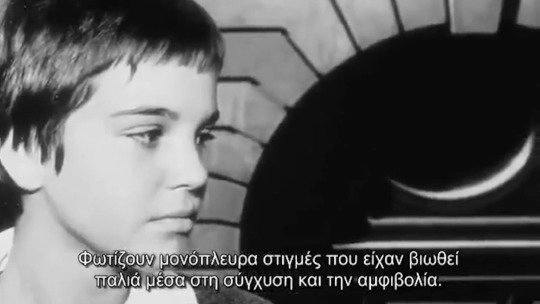
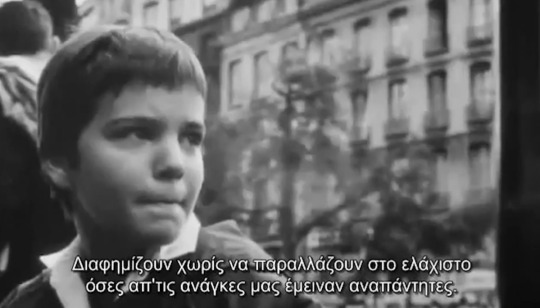
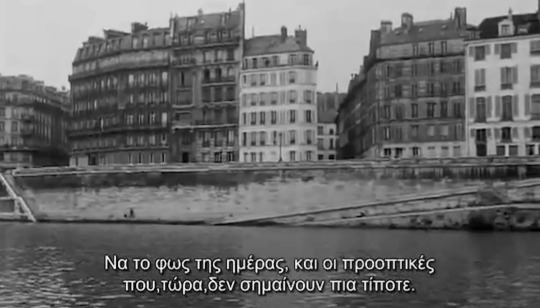
Guy Debord, Κριτική του διαχωρισμού (1961)
186 notes
·
View notes
Photo









Guy Debord - Critique of Separation (1967)
238 notes
·
View notes
Text



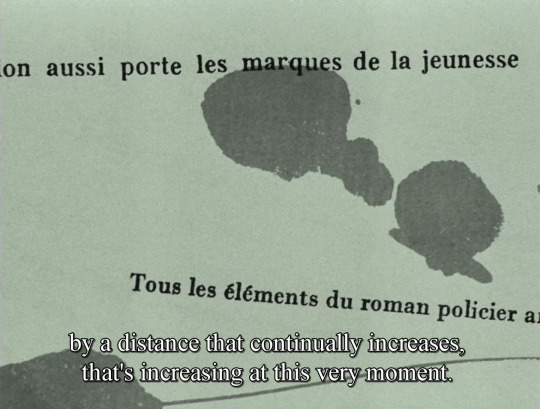
Critique de la Séparation (Guy Debord, 1961)
#Critique de la Séparation#Critique de la Separation#Guy Debord#Debord#short film#1961#Critique of Separation#quote#black and white#time#philosophy
588 notes
·
View notes
Note
Hiii do you have any other literary trope/ device like verisimilitude that you'd like to nerd out about? I'm sitting in front of you, chin on hand, legs swinging ☺️
hell yeah!!! death of the author!
not a literary device but it's a term i come across almost every single day on this here webbed site (mainly in posts about hp and jk rowling) but NOT ONCE have i seen it used correctly so.. maybe i can clear some things up
(warning: this is gonna be extremely condensed and simplified so don't quote me pls lmao)
ok so the death of the author refers to an essay by roland barthes (la mort de l'auteur) which remains very influential in literary theory to this day. it's a pretty provocative title and barthes probably regretted his choice when he had to explain to someone for the hundredth time that "thats not what i fucking meant" hgjfhgf but ANYWAY. contrary to what the title may suggest, it is NOT about the disappearance of the author but about giving power to the consumer of a work of art (the reader).
basically, it's a critique of the dominant author-centered theories in literary criticism at the time (1960s) and the essay's central argument is that an author doesn't have sovereign authority over their text since, in the process of writing, they are not creating a wholly original work but rather a collage of impressions, experiences, other texts, etc. this idea of a disjointed text as an assembly of parts means that a text doesn't have a single "true" meaning and so it cannot be "understood". instead, meanings (plural) are co-created and re-created over and over again by the reader.
to reflect that separation of "authorship" from "authority" barthes introduces the term "scriptor". instead of a traditional author, who creates an original work through the power of their imagination alone, a scriptor combines existing words and texts in new ways, but they are unable to decide the meaning of their work. i think it's important to emphasize that he wasn't trying to diminish the creative effort of writers. he just explains that every modern writer draws on established conventions and traditions and other existing texts. for barthes, the figure of the scriptor is born with the text, "here and now", in the present moment, through the process of reading.
so... in a sense, it is about "separating the art from the artist" but not in a "jkr is transphobic but harry potter isnt" kind of way, which is what a lot of people seem to think. barthes was just trying to open up new ways of interpreting a text and he opposed the limiting veneration of a god-like author. thats why he connected the death of the author to the birth of the reader. the main idea is simply that authorial intent is only one of many equally valid interpretations. it CAN be an interesting pursuit to figure out what a writer meant, but barthes argues that it's impossible to find a definitive answer to that question, and that OTHER perspectives are just as important. texts can hold meaning beyond what the author intended, and they can even develop meanings that contradict the author's intentions. the scriptor assembles a text, but the unity of a text is created by the reader.
"The reader is the space on which all the quotations that make up a writing are inscribed without any of them being lost; a text's unity lies not in its origin but in its destination. Yet this destination cannot any longer be personal: the reader is without history, biography, psychology; he is simply that someone who holds together in a single field all the traces by which the written text is constituted."
barthes invokes some important structuralist principles (every text is part of a larger context, etc) but in his critique of authority and his rejection of the search for a single objective truth he bridges the gap to poststructuralism. and thats why his essay was so important. the death of the author is not an excuse to put on blinkers and to consume the works of bigots uncritically. it actually encourages readers to be critical and to consider the broader context of a text.
to circle back to the example of harry potter: the death of the author does not mean "claiming" hp as your own and trying to detach jk rowling's fictional work from from her very real bigotry. (it's impossible anyway because one informs the other.) the death of the author is actually the death of the author's authority over their text. it is not an excuse to shield art from criticism against its creator. quite the opposite! in jkr's case, her hateful comments actually open up new perspectives for the re-examination of the harry potter books.
tl;dr: (1) it is impossible for an author to decide the meaning of their own work, (2) it is impossible for a reader to determine the author's intent through the process of reading, and (3) a cultural text does not have a singular objectively true meaning.
#''this is extremely condensed'' *writes one million paragraphs*#anyway thank you#for the prompt jfhvjfhrjvh#my name is pandora and this was my unboxing#lit#death of the author#ask#moochies#&
13 notes
·
View notes
Text
youtube
By Angely Mercado
Grammy- and Latin Grammy-winning Puerto Rican rapper Residente’s latest song, “This is Not America,’’ is an anthem for people who understand that imperialism and forced immigration cannot be separated from environmental issues.
Both social and environmental crises are shown in bloody realism throughout the music video, currently trending at #11 for music on YouTube. “This is Not America,’’ featuring Afro-French Cuban duo Ibeyi, takes aim at police brutality as well as pollution from environmentally extractive industries that force Latin America’s Indigenous communities from their ancestral lands.
“Aquí estamos, siempre estamos. No nos fuimos, no nos vamos. Aquí estamos pa’ que te recuerdes. Si quieres, mi machete te muerde,” the chorus says. “Here we are, always are. We haven’t left, we won’t leave. Here we are, so that you can remember. And if you want, my machete will bite you.”
Many of Residente’s anti-imperialist songs mention machetes, perhaps a connection to his constant critique of Puerto Rico’s status as a U.S. colony, something he discussed in interviews following Hurricane Maria in 2017. His music is a reminder that having a Caribbean identity, having a Latin American identity, comes with a lot of baggage.
“Desde hace rato, cuando ustedes llegaron, ya estaban las huellas de nuestros zapatos,” Residente raps. “For a while before you arrived, the footprint of our shoes were already here.”
“America isn’t just the USA papá, it’s from Tierra del Fuego to Canadá.”
The video opens with an ode to Lolita Lebrón, a member of the Puerto Rican nationalist party who shot a pistol during a House of Representatives chamber meeting on March 1, 1954, alongside other nationalists calling for Puerto Rican independence. Her attack on the governing body came just a few years after the El Grito de Jayuya, or the Jayuya uprising of 1950, a revolt against U.S. imperialism in the town of Jayuya and in several other towns across the island. The deceased Lebrón is now a leftist hero.
In the video, an actress representing Lebrón shoots into the air, and nearby police officers start running toward her.
What follows are scenes of protests against heavily armed police, people forcibly separated (including a mother breastfeeding her child through a fence), and what look like students lined up with bullet holes in their heads. The backdrop features bomba beats, an Afro-Puerto Rican style of music that often symbolizes resistance against oppression and was a powerful tool for expression during the 2020 Black Lives Matter protests.
In one scene, an Indigenous child sits on a tower of McDonalds-style fast food containers; other shots show Indigenous children on piles of disposable coffee cups and Amazon packages. A man with Eurocentric features in a suit is eating steak with a glass of red wine. After taking a bite, he turns to wipe his face with a large Brazilian flag as another Indigenous child looks on.
The steak-and-flag scene is the video’s least subtle reference to climate justice and Indigenous rights. I interpreted it as a nod to the socially and environmentally destructive policies of Brazilian president Jair Bolsonaro. When the man wiped his face, I thought for a moment that I was looking at Bolsonaro himself.
Under Bolsonaro’s leadership, millions of acres of the Amazon rainforest have been set on fire and illegally cleared for cattle and crops—top export products for the country—in just a handful of years. Indigenous forest defenders and allies who work with them are often displaced and even murdered so that there can be more land for agricultural production. In 2021, the Brazilian Senate committee created a draft accusing Bolsonaro of crimes against humanity, including genocide. He’s made it clear time and time again that it doesn’t matter if people are displaced and the environment destroyed, as long as industries turn a profit.
“This Is Not America” is an impactful and graphic condemnation of unfettered corporate greed and the cruelty of those in power. It’s also a warning that many of the victims of are fighting back.
Residente reminds us that there are casualties from modern imperialism. Just because it doesn’t look like ships arriving on the shores of a supposedly undiscovered land, doesn’t mean that imperialism is a thing of the past. Residente tells us that it happened then, and it’s happening now.
The U.S. and other wealthy nations outsource our trash and our pollution to vulnerable communities. The long-lasting devastation that ensues is easier to ignore if we don’t know where the bodies are—and this video aims to put those corpses front and center. It ends with bodies being laid out to form the word “America.”
#Residente#ibeyi#This is Not America#tw: violence#imperialism#global warming#climate change#capitalism#politics#موسيقى#Youtube
8 notes
·
View notes
Photo

"Small black eyes,
if you look,
let houses and cities fall down.[...]"
Giovanni Meli, The eyes [According to the tradition, Meli is referring to Lucia Migliaccio's beautiful black eyes].
Donna Lucia Maria was born in Siracusa on January 18th 1770. She was the daughter of Don Vincenzo Migliaccio e Bonanno, of the Princes of Baucina and 8th Duke of Floridia and San Donato, and Spanish descendant Dorotea Borgia e Rau, of the Marquises of Casale. At 6, following her father's death, and as her parents' only living child (her brother Ignazio had already died at just 5 years old), she inherited the Duchy of Floridia.
On April 19th 1781, only 11 years old, the little Duchess married in Palermo the 25 years old Benedetto Maria Grifeo del Bosco (he was born on November 17th 1755), Duke of Ciminna and firstborn of Gerolamo Maria 7th Prince of Partanna. The Grifeo was an incredibly old and noble Sicilian family whose ancestors received their titular fief during the rulership of the Great Count Ruggero, in 1091, and the baronage in 1139, during the reign of his son, King Ruggero II of Sicily. In 1802 the Prince Gerolamo Maria died, and Benedetto became the 8th Prince of Partanna, making Lucia the Princess consort.
Benedetto also inherited the role of Deputy of the Kingdom, and on November 4th of the same year, he was awarded by King Ferdinando IV of Naples and III of Sicily with the knighthood of the Insigne Real Ordine di San Gennaro. The Prince of Partanna also served as Gentleman of the Bedchamber and State Councillor, giving his wife the chance to frequent Palermo high society and even the Royal court during King Ferdinando's long periods spent in Sicily. Lucia was praised for her intelligence, artistic skills and beauty (in particular her black eyes).
The Princess bore her husband nine children, five of whom survived infancy: Vincenzo (future 9th Prince of Partanna), Giuseppe, Leopoldo, Luigi. Marianna, the only daughter, is considered by some people the illegitimate daughter of King Ferdinando, since she was born in 1808, when Lucia was already the sovereign's lover, and given the deep affection Ferdinando always exhibited for Marianna.
Since 1806, the King and his court, had been forced to move to Palermo to escape the French army which had invaded the peninsular part of the Bourbonic kingdom and would establish the Kingdom of Naples under the rulership of Napoleon's brother-in-law, Joachim Murat.
In the meantime, Lucia's beauty (not ruined in the least by the numerous pregnancies) gave soon rise to a lot of gossip, and her name was linked to other gentlemen's ones, like the Neapolitan Lucio Caracciolo, Duke of Roccoromana, renowned womanizer. The existence of a relationship between the two is (according to some) supported by the fact that, once married to the King, she asked her husband to pardon the Duke, as Caracciolo had been loyal to Murat and even took part to the Russian Campaign. Despite his traitorous track records, in fact, the Duke retained until the end his favoured position at the Bourbonic royal court.
On January 16th 1812, King Ferdinando, who since 1806 had been able to count on the help of the British army and, thanks to them, retain control of Sicily, was nonetheless forced by his protector Lord Bentinck to hand over his powers (on the basis of a fictitious illness) in favour of his son Francesco, who was appointed Regent of the Kingdom. The same year, on March 28th, Don Benedetto Grifeo died at 56, leaving Lucia free to pursue her relationship with Ferdinando with fewer restrictions especially since the King's rightful wife, Maria Carolina, having lost any political influence and accused to have plotted against the British allies was forced to leave Sicily to never return.
On July 1814 Ferdinando pronounced himself recovered and took back control of the government. As he intended to keep the peace in the Sicilian territory, he declared he would maintain (at least officially) the Sicilian Constitution which had been promulgated in 1812, under the regency of his son. Two months later, on September 8th, Maria Carolina would be found dead in her chamber in Hetzendorf castle, in Vienna.
Now free, Ferdinando asked Lucia to marry him, and she was too happy to accept. The couple married in Palermo's Palatine Chapel, in a secret ceremony officiated by Friar Salvatore Maria Caccamo, the King's confessor and chaplain, and with Vincenzo and Carlo De Falco as only witnesses, on November 27th, barely 80 days after Maria Carolina's death. Lucia was 44, while her husband was 63.
Ferdinando's son and heir, Francesco had tried to dissuade his father on the ground of the many rumours going around Lucia's marital fidelity, to which the old King supposedly retorted: "Penza ‘a mammeta, guagliò, penza ’a mammeta!" ("Think about your mom, kid, think about your mom!"), alluding to the deceased Queen's affairs. The only thing that cheered Francesco was that, as a morganatic union, no child born from that marriage could make any claim on the Throne.
As soon as people got wind of the secret wedding ceremony, the couple was critiqued as their marriage (which moreover had happened too soon) was seen as an attempt made by two cheaters who, now both widowed, had tried to patch things up.
Unlike her illustrious and strong willed predecessor, Lucia proved to be discreet, moderate and accommodating, staying away from political affairs and intrigues. Ferdinando was particularly satisfied with his new wife, bragging that he had now a wife that let him do whatever he wanted, and a Minister that gave him little to do.
Even though Napoleon had already been (apparently) defeated in Leipzig and sent to exile on the island of Elba, Murat was still ruling in the Neapolitan territory, making for Ferdinando impossible to return, even with the British support. It would be only one year later, that the former Emperor's brother-in-law would be defeated in the battle of Tolentino, at the beginning of May. Thanks to the agreements made during the Congress of Vienna, and especially since the Treaty of Casalanza signed on May 20th 1814, Ferdinando was given back almost his whole former territories. In this same occasion, although, he lost Malta (which had been part of the Kingdom of Sicily since XIth century) which became a British protectorate, and the Stato of the Presidi (which included the Island of Elba), donated to the Gran Duchy of Tuscany.
In 1815 Ferdinando returned to Naples with Lucia by his side, while his son Francesco was left in Sicily to act as Lieutenant of the Kingdom. In Naples Lucia was warmly welcomed and was showed the due respect as a real Queen. Moreover, her beauty also helped attracting many artists' attention.
That same year Lucia received from her husband a special gift. The King in fact bought for his wife the vaste estate located in the Vomero quarter in Naples, which once had belonged to the Prince Giuseppe Caracciolo of Torella. As a tribute of Lucia's title of Duchess of Floridia, the manor was renamed la Floridiana, while the park annexed was called Parco Grifeo (deriving from another of her titles). The property was enriched in 1817 with the purchase of other surroundings plots, while between 1817-19 architect Antonio Niccolini cured the reconstruction in Neoclassical style of the pre-existing villa and the re-configuration of the park as an English landscape garden. Friedrich Dehnhardt, the then Director of the Botanical Garden of Naples, oversaw the bedding of more than 150 species of plants, which went to enrich the already beautiful park. By 1819, the estate comprehended two villas (Villa Floridia – later Floridiana - and Villa Lucia), a bridge which connected the two habitations, an open-air theatre called "della Verzura", a Neoclassical circular temple, fake ruins, fountains, statues and greenhouses. La Floridiana was to be Lucia and Ferdinando's haven of tranquillity for the next few years.
On December 8th 1816 Naples and Sicily were merged into a single state, which was named Kingdom of the Two Sicilies (with Naples as its Capital, much to Palermo and the Sicilian in general's chagrin), and Ferdinando became the first sovereign of the now unified reign, and would be known as Ferdinando I of the Two Sicilies. The heir Francesco resumed his role as Regent and Lucia as Royal spouse.
In his last years, Ferdinando had to deal with revolutionary movements in both Sicily and Naples. He was forced to sign the Constitution and once more to entrust the executive powers to Francesco. It was only in 1821, with the help of the Austrian army which occupied Naples (the revolution in Sicily had already been stopped), the King managed to restore the Bourbonic absolute monarchy and the Constitution was withdrawn. Ferdinando died four years later, on January 4th 1825, after 57 years of reign. He was 73, and his marriage with Lucia had lasted 11 years. Lucia spent her remaining time in her Floridiana. She died one year and three months later, on April 26th 1826. She was buried in the Church of San Ferdinando, in Naples, separated from her husband, who lies in the Church of Santa Chiara, burial place of the Bourbonic Kings of Naples.
Her son Vincenzo inherited his mother's titles and fiefs, while La Floridiana was divided in 1827 by the deceased Duchess' children into three distinct parts. Villa Lucia was firstly owned by her son Luigi Grifeo, Minister to the Grand Duchy of Tuscany, and then passed from hand to hand. The villa is currently a private residence whose property is divided into three wealth Neapolitan families. Villa Floridiana and the park, on the other hand, underwent many alterations at the hands of the heirs, until in 1919 they were sold to the Italian State and became the Museum of Ceramic.
#women#history#women in history#history of women#historical women#lucia migliaccio#ferdinando i of the two sicilies#modern sicily#myedit#historyedit#people of sicily#women of sicily#house of bourbon of the two sicilies#siracusa#province of siracusa#Palermo#province of palermo
24 notes
·
View notes
Photo

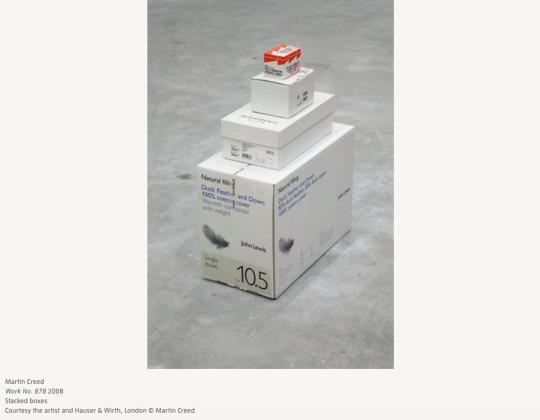
Looking at the history of emptiness in modern art I am often reminded of Zeno’s paradox of Achilles and the tortoise. Zeno imagined a race, in which Achilles would generously grant the tortoise a head start of say 100 metres, and each would move at a steady, unchanging speed. His conclusion was that Achilles would never be able to catch up with the tortoise, because every time he came close, the tortoise would have had time to move a little further, so that the distance between them would endlessly decrease to a few yards, a few metres, one metre, 0.1 metre, 0.01 metre, etc. In the same way, every time the audience of modern and contemporary art is led to believe that the avant-garde reduction of the artwork to a minimal, barely perceptible form can go no further, along comes another artist who creates another even more minimal, even less perceptible, artwork.
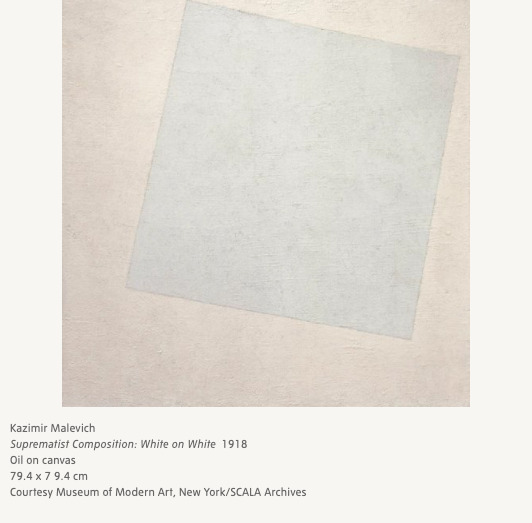
Thus, it seemed that the history of modern art had reached its zero point when Marcel Duchamp presented a glass pharmacy phial filled with Paris air to an American collector in 1919, or when Kazimir Malevich painted his White on White composition in 1918, and two years later filled a room with, as one person noted, empty canvases ‘devoid of colour, form and texture’ on the occasion of his first solo exhibition in Moscow. Yet in a 1968 article, critics Lucy Lippard and John Chandler could only observe that ‘the artist… has continued to make something of “nought” 50 years after Malevich’s White on White seemed to have defined nought for once and for all. We still do not know how much less ‘nothing’ can be.’ Thirty-five years later, Gabriel Orozco’s sole contribution to the Aperto exhibition at the 1993 Venice Biennale consisted of an empty shoe box, eight years before Martin Creed notoriously won the Turner Prize partly for his installation Work No. 227: The lights going on and off at regular intervals. Nearly ten noughty years down the line, and shortly after a museum survey entitled Voids: a Retrospective presented visitors with nine perfectly empty rooms, we are still none the wiser about ‘how much less “nothing” can be’.
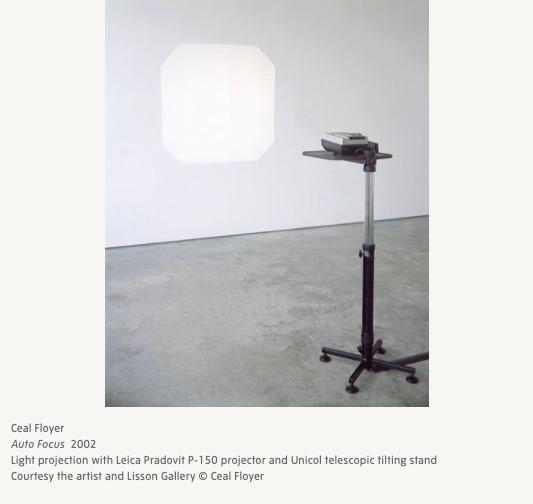
Year after year, decade after decade, however, one thing doesn’t seem to change: if we haven’t walked through, on, or past the artwork without noticing it, our reactions to this kind of barely perceptible, almost nothing, practice will predictably range from puzzlement and laughter to anger and indignation. Even before Malevich’s 1920 exhibition, a French cartoonist had imagined in 1912 that the empty canvas would be the next avant-garde prank visited on its baffled public. In the caption, the artist presenting his blank canvas explains in a pun on the then-current Futurist movement: ‘It’s the most futurist picture of all – so far it is only signed, and I’ll never paint it.’ As the emptiness and reduction of blank canvases, of white or black monochromes and of Duchampian readymades were extended to silent concerts and empty galleries in the second half of the twentieth century, the question remained: are all these forms of emptiness so many variations on the same provocative joke?
The first documented entirely empty exhibition, Yves Klein’s The Specialization of Sensibility in the Raw Material State Into Stabilized Pictorial Sensibility – better known as The Void – at the Galerie Iris Clert in Paris in 1958, certainly had all the trappings of an elaborate PR stunt. Not only did Klein empty the exhibition space and paint the remaining walls and cases white, he also posted two Republican Guards in full uniform at the entrance of the gallery, served blue cocktails especially ordered from the famous brasserie La Coupole and had even planned to light up the obelisk on the Place de la Concorde with his brand of International Klein Blue. While the last event was cancelled at the last minute, an estimated 3,000 visitors did show up on the night of the opening, filling the streets around the gallery as they waited to enter the exhibition space through blue curtains, one small group at a time. The crowd was finally dispersed by the police called in by disgruntled visitors who had felt swindled after paying their entrance fee to be shown an empty gallery. In some ways, the succès à scandale of The Void has obscured Klein’s very idiosyncratic brand of showmanship and mysticism. His interest in the immaterial was genuine, inspired by his exploration of monochrome painting and his belief, influenced by Rosicrucianism, that humans must strive to liberate themselves from flesh and matter.
If some artists since Klein have embraced such spiritual readings of the void, a more general preoccupation with the invisible seems to account for many empty exhibitions in the past 50 years or so. Maria Eichhorn, a German artist whose early work includes white texts written on white walls, speaks for many artists when she explains: “There is such a fixation in our Western culture on the visible, which explains why we think that… a room is empty… because there is nothing visible. But I’ve never thought that an empty room is empty.” In the late 1960s Robert Barry had already pointed to the imperceptible forces that literally surround us by introducing radio waves as well as magnetic currents into the gallery space. American artist Maria Nordman has tried to focus viewers’ attention on the light falling through an empty gallery’s windows at different moments of the day and of the year. More prosaically, other artists have invited visitors simply to contemplate the architecture of the gallery. Arriving in 1993 at the Museum Haus Esters in Krefeld, originally a house designed by Mies van der Rohe, British artist Bethan Huws felt she could not add anything to the beauty of the modernist building. Instead, she distributed a poem to visitors and let them admire the gallery for itself.
In the 1970s American artist Michael Asher pioneered strategies through which to reveal the architectural structure of the gallery. At the Clare Copley Gallery in 1975, for example, he simply removed the wall separating the empty exhibition space from the art dealer’s office. By opening up this space, the artist was not only inviting visitors to consider its architectural features: he also reminded them of the Business transactions taking place behind the walls of commercial galleries. After Asher, other artists have explored the invisible networks of art business and institutional presentations that frame the art we view. Maria Eichhorn used the budget allocated to her show at the Kunsthalle Bern to tackle the institution’s debts and fund much-needed refurbishments of the building (Money at the Kunsthalle Bern 2001), while in their 2005 Supershow – More than a Show, the collective Superflex used theirs to give each visitor two Swiss Francs instead of asking them to pay an entrance fee to see empty spaces adorned only by texts stating the physical properties of each room (surface, wall colour, maximum number of visitors, etc). Museum surveillance is alluded to in Roman Ondák’s 2006 More Silent than Ever, which warns visitors that hidden listening devices are installed in the room.

Presented with invisible elements such as Ondák’s listening devices or Barry’s magnetic fields, we are left wondering whether to believe the artists’ claims since, after all, there is no adequate way to confirm them. We come to realise that our relation to the work is predicated on knowledge, presuppositions and some form of trust in the authority of artists and art institutions. British artist Ceal Floyer traces her interest in minimal displays back to her experience as a gallery invigilator while she was an art student. ‘I watched a lot of art being seen. And a lot of art being not seen,’ she remembers. ‘That was a training in itself. I discovered that presumption is a medium in its own right.’ As with Creed’s The lights going on and off , Floyer’s plastic buckets and black rubbish bags casually sitting in the gallery certainly reveal to us our prejudices and expectations as to what art is or should be. Gabriel Orozco says he actively seeks to disappoint his viewers. Is my irritation at being presented with an empty shoe box or lights going and off ultimately good for me?


The veiled hostility directed by the artist at the viewer situates such attitudes in the context of more radical declarations against art and its institutions. When presenting her empty exhibition at the Lorence-Monk Gallery in New York in 1990, American artist Laurie Parsons went so far as to refuse to include her name on the invitation to the opening and to remove all reference to the show from her CV. Four years later, she ceased to produce works altogether, thus following a line of artists before her who deliberately decided, as part of their practice, to give up, or take a break from, the profession. From this perspective, the empty gallery is less an artwork than a gesture – of provocation, dissent and critique. As Brian O’Doherty has shown in his well-known study of the modern “white cube” gallery, such a gesture ‘depends for its effect on the context of ideas it changes and joins’. For the gesture to succeed, its timing, place and audience have to be just right. Sometimes it can be understood only retrospectively, as it becomes historicised.
It would be unfair, however, to reduce all explorations of emptiness, nothingness and the invisible to the rhetoric of the gesture. To return to Orozco’s Empty Shoe Box: when it was first shown in 1993, it certainly poked fun at the Venice Biennale’s frenzy of publicity and consumption, but it also served as a memorable image of the container or vessel that is a leitmotif in the artist’s work. ‘I am interested in the idea of making myself – as an artist and an individual – above all a receptacle,’ stated Orozco. Playing with contrasts between empty and full, his work as a whole exemplifies a sensitivity to reciprocal spatial relations. In a notebook, he compares discarded pieces of chewing gum on a pavement with the stones placed on a board in the Asian strategy game of Go. Like Empty Shoe Box, the Go stones and the spat-out blobs of gum occupy and cut out space, demarcating a territory according to very specific patterns of chance and intention.

Many artists have similarly been interested in the space between objects. Both the Belgian Joëlle Tuerlinckx and the Brazilian Fernanda Gomes often present arrangements of small, discrete everyday objects scattered around otherwise vacant gallery spaces. Tuerlinckx describes the exhibition space as ‘a kind of parcel, a packet of air’ that she is invited to open and explore through her work; Gomes says she never comes to the gallery with a pre-defined plan. In these installations, the empty gallery becomes a blank page to be inscribed (as in Tuerlinckx’s spatial drawings), or the pregnant void that surrounds objects in paintings such as Giorgio Morandi’s (in Gomes’s three-dimensional still-lifes).
Painting is also a surprising reference for the performances staged by Marie Cool/Fabio Balducci, during which Cool stands in an empty room as she enacts a series of repetitive, extremely precise gestures using flimsy everyday materials such as paper, tape, or thread. The French- Italian duo has claimed that the image of a figure hovering in an undefined yet meaningful space was inspired by early Renaissance religious painting such as Simone Martini’s Annunciations. The empty gallery as a stage for action has also been effectively used by Martin Creed, when he asked runners to sprint down the Duveen Galleries at Tate Britain, one by one at regular intervals, in 2008, or by British-German artist Tino Sehgal, who in 2010 choreographed two continuous scenarios, involving three actors, in the spiral rotunda at the New York Guggenheim Museum.
Placed in vast expanses of void, both bodies and objects appear more vulnerable. On the one hand, such installations provide an alternative to the spectacular displays encouraged by increasingly large-scale museum and gallery spaces. By celebrating the commonplace, the barely noticed, as well as frailty and precariousness, artists thus seem to be actively resisting the pressure to create ever-bigger, glossier, more awe-inspiring works. On the other hand, however, such minimal mises en scène can create new forms of spectacle – as when Maurizio Cattelan places his miniature self-portrait, a resin figurine hanging from a clothing rack, in a corner of the empty gallery in order to emphasise his apparent failure to take on the revolutionary role of 1970s artists such as Joseph Beuys (to make the point, the Cattelan mini-me is clad in Beuys’s signature felt suit).
While such formal devices are often little more than simple gimmicks, works that effectively stage their own weakness and vulnerability can raise questions about the institutional and social conditions that guarantee their existence as art. In Hans Christian Andersen’s tale of The Emperor’s New Clothes, a naked emperor is persuaded by his tailors that his fine clothes are visible only to intelligent people; his subjects, afraid like him to admit that they cannot see them, applaud his outfit until a small child in the crowd finally blurts out the truth – ‘But he’s got nothing on!’ Though above all a cautionary tale against the deceptive powers of flattery, vanity and sycophantism, the story also provides an image of the willing suspension of disbelief required by most forms of art. After all, the artist’s deception, like the cheating tailors’, could never work without our participation. In his 2002 work Lament of the Images, Chilean artist Alfredo Jaar mobilises this kind of community of believers by presenting us with two dark, apparently empty rooms. In the first, we come across three small backlit text panels relating real stories about invisible or impossible images, such as the fact that the United States Defence Department purchased the rights to all available satellite images of Afghanistan during the 2001 air strikes so that the global media could not publish them. The second room houses a single, brightly lit, empty screen. Blinded by its light, we are reminded of our own blind spots – our complicity in the invisibility of certain images and in the existence of many an emperor’s new clothes.
5 notes
·
View notes